Last days to join Business Strategy for Top Executives Masterclass with Costas Markides
Next week on March 23, 2021, founders and entrepreneurs, CEOs and investors, business developers and sales executives will participate in Business Strategy for Top Executives Masterclass with acclaimed Prof Costas Markides.
If you’re looking to turn your business from disrupted to disruptor and find innovative ways to thrive, then this masterclass is for you.
These are the last days you can get your tickets.
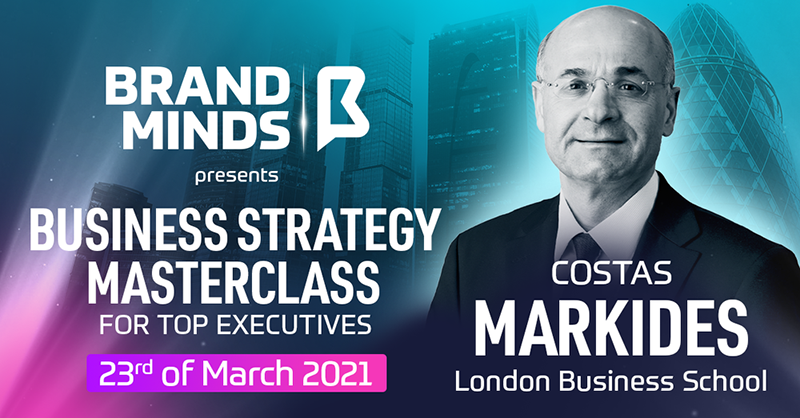
The masterclass is held online through live streaming. It starts at 9 am and ends at 5 pm with a Q&A session which is a great opportunity to get answers to your questions. An outside perspective over your particular situation is invaluable. It could light a new pathway that you couldn’t have seen otherwise.
Here is the agenda of Business Strategy for Top Executives Masterclass:
Session 1: STRATEGY IN A VOLATILE WORLD
Success doesn’t come by chance or fall in your lap. It’s the result of a well-thought strategy and an excellent implementation plan.
You know how they say about overnight success?
This overnight success has taken ten years of hard work and perseverance.
That’s why you need a strategy for your business. And given the volatile nature of the world we are living in, even more so today.
Every successful business has a successful strategy. Remember: strategy before tactics.
Amazon’s main strategy is to focus on their customers. But the global leader of the ecommerce market doesn’t just listen to its customers.
Year after year, since 1997, Amazon sets out to delight its customers.
And that’s the drive pushing every improvement and product or service that the company has ever made: its search recommendation engine, AWS, one-click purchase, Alexa and so on.
Join the masterclass to upgrade and improve your business strategy!
Session 2: STRATEGIC AGILITY IN TODAY’S WORLD
There has never been a better time to go agile in business. Times are changing quickly and the business environment must adapt and keep up.
In 2014, consulting company McKinsey & Co introduced two new dimensions to their organisational surveys: speed and flexibility.
They described the companies that combined both as agile.
Companies that are agile can adapt quickly to new challenges and opportunities. They mobilize quickly and show a strong relationship between organizational health and the creation of value. They move to market faster than traditional companies and have lower costs.
Join the masterclass to discover ways to create strategic agility for your business!
Session 3: MOBILIZING THE WHOLE ORGANISATION FOR STRATEGY EXECUTION
Whether you lead a business of thousands of employees or a small team of five, you need to be aware that for the strategy to work, everyone must be on board.
Every employee, from front desk to product development to supplier quality has to understand the strategy, contribute to its implementation and be on the same page with everyone else.
Learn from strategy expert Costas Markides how to mobilize your organisation for strategy execution.
Session 4: NEW CHALLENGES FOR LEADERS
One of the abilities that successful leaders need to develop or acquire is the ability to see around the corner.
What does that mean?
It means to have one foot in the future.
It implies to be able to spot trends before they go mainstream and take steps to leverage them to the benefit of your business.
It’s called strategic foresight. Strategic foresight allows companies to prepare for the future.
What challenges do leaders have to face in the near future?
Is it employee high turnover due to low engagement levels in the context of the work-from-home situation?
Everything going digital and online?
Changes in customer behaviour?
Attend the Business Strategy for Top Executives to find out!
Join the Conversation
We’d love to hear what you have to say.
Get in touch with us on our LinkedIn Page, Facebook Page, Twitter or TikTok.
Diana Stafie, Strategic Foresight Consultant: Foresight allows companies to prepare for the future
As a business owner or entrepreneur, what do you fear the most? The ever-changing market, the competitors or the rapid rise of new technologies?
You fear all of them. You fear what you don’t know. You fear the future.
What if you could know today what could impact your business in the future?
Strategic foresight allows companies to do just that – prepare themselves for the future.

Diana Stafie
Diana Stafie is a Strategic Foresight consultant and Partner at futureStation, a Foresight OnDemand consultancy company. I reached out to Diana and asked her a few questions on strategic foresight, an emerging discipline in the business environment.
In this article:
- Definition of foresight
- Benefits of doing strategic foresight
- How companies can integrate future thinking in their cultures
- Foresight vs Predictability
- Three books on foresight
Q: What is foresight: strategy, tool or process?
All that, plus mindset.
When I think about our foresight work done for clients, the analogy that comes into my mind is that we are like a “Waze” for business – instead of “Outsmarting traffic, together” we could Outsmart competition, together.
Using the foresight discipline and its methodology, we help companies understand the different routes (scenarios) that they should consider in their journey and choose the one that takes them to the preferred destination.
We also warn them of the different pitfalls (innovations, consumer behaviour change, emerging technologies) that they might encounter on the way. Not all players in an industry reach the same destination; by using foresight as a “Waze” for business, companies could reach some goals sooner than their competitors.
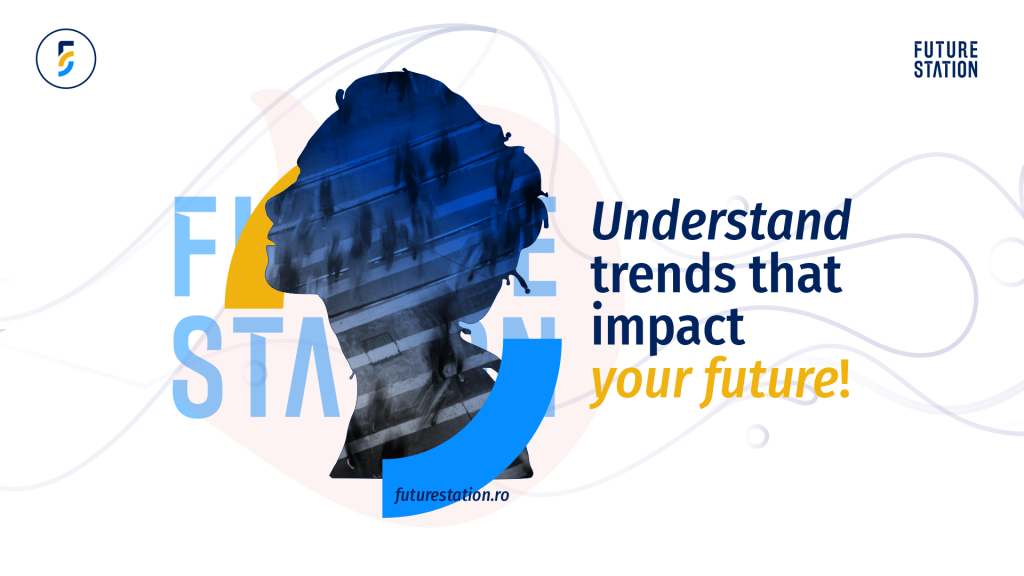
Q: Name 3 benefits that companies receive when using corporate foresight.
The strategic warning would be one: by working with foresight tools, companies can identify those vital early signs of change that could influence or disrupt their industry. It is a contribution to the mitigation of risks explicitly related to external events — changes in the competitive environment.
Further on, the methodology allows them to think in alternative scenarios and turn change and uncertainty into opportunities. If you were a decision-maker, wouldn’t you like to have an early warning capability?
Foresight also helps companies build relevance: understanding future trends allows companies to anticipate what consumers/employees want next and create relevance for them. Ask yourself, is the industry changing, but your company is not?
[bctt tweet=”Diana Stafie (Strategic Foresight Consultant): Not all players in an industry reach the same destination; by using #foresight as a “Waze” for business, companies could reach some goals sooner than their competitors.” username=”brand_minds”]
And foresight also helps companies show thought leadership. A thought leader is a company who, based on its expertise and perspective in the industry, offers unique guidance, inspires innovation and influences others in the business environment. And by understanding the trends and uncertainties of the industry, companies could communicate as Thought Leaders.
Also, according to the 2018 Corporate Foresight benchmarking report made by the Aarhus School of Business,
Organizations that value future preparedness are 33% more profitable than the average.
Q: How can CEOs and top executives build a culture of future thinking in their companies?
We often feel that we live in a short-term world, so long term thinking does not come easily. The short-term pressure is coming from all sides, especially in our Eastern European context. But doing foresight can be a solution.
Start by designing a framework of early signs warning. This can provide the ability to not just observe the future happening, but to actively shape it.
Take time and understand trends and the changes in consumer behaviours. By doing so, companies can decode consumers’ emerging expectations and offer products/services that consumers might not even realise they needed so much.
Most of our knowledge is about the past, but all our decisions are about the future. Most of what we need to know to make the right decisions today is outside our comprehension – we don’t even know it’s there.
So, start reflecting more upon whether or not you know enough about the future you are aiming for. Companies could do that by running scenario planning exercises and asking “what if” questions – this encourages teams to consider events that may only be remote possibilities and stretch their thinking. Get inspiration from Shell; they’ve been doing foresight since the 1970s.
Q: What is the difference between foresight and predictability?
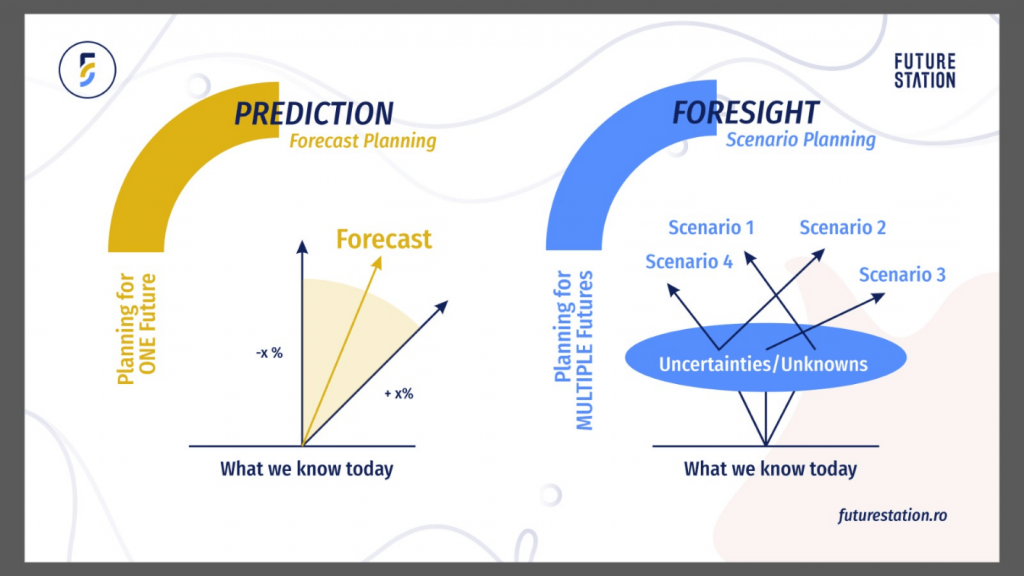
Danish physicist Neils Bohr said,
Prediction is very difficult, especially about the future.
In its antipathy to prediction of any kind, the strategic foresight field orients towards future preparedness with the help of qualitative, exploratory and narrative tools.
Do we think there is only one future?
If not, why do we only plan for one?
Foresight catalyses thinking in alternative futures.
Q: Foresight experts look into the future. How many years into the future?
The time horizon considered for the foresight analysis depends on industry dynamics (product life cycles: retail – fast, mining – slower), the intended use of the analysis (operational vs strategic), but also the management’s appetite for uncertainty.
The great hockey player Gretzky said once that,
A good hockey player plays where the puck is. A great hockey player plays where the puck is going to be.
Thus, it also depends on where companies want to “play”.
Q: Recommend one book on foresight that entrepreneurs, CEOs and startup founders should read this year.
For a book focusing on foresight methodologies and processes, I would recommend “Thinking about the future” (Andy Hines and Peter Bishop).
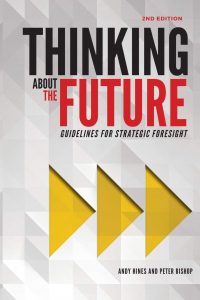
Thinking of more generally future-focused books, there are two just released: “The future is faster than you think” (Peter Diamandis and Steven Kotler) and “After Shock” which is a compendium of essays by the world’s foremost futurists observing the 50th anniversary of Alvin Toffler’s “Future Shock” while also looking ahead to the next 50.
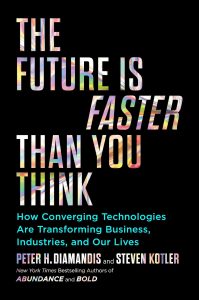
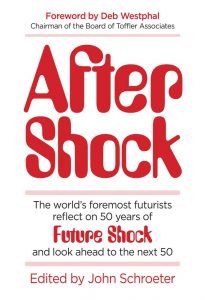
Join the Conversation
We’d love to hear what you have to say.
Get in touch with us on our LinkedIn Group, Facebook Group or Twitter.